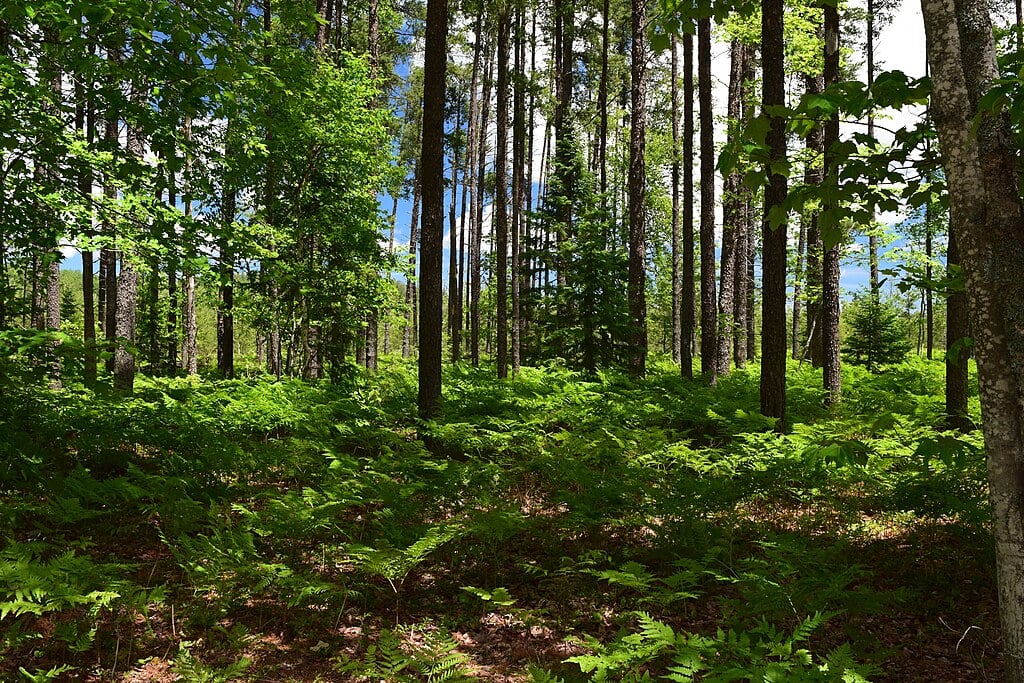Native American Farming Site Uncovered in Michigan Challenges Historical Assumptions
Source: GreekReporter.com

A newly uncovered Native American farming site in Michigan’s Upper Peninsula is prompting researchers to rethink long-held assumptions about agriculture in the region.
Led by a team from Dartmouth, the study reveals extensive farming practices by ancestral Menominee communities at the Sixty Islands site, located along the Menominee River.
Despite the area’s cold climate, short growing seasons, and dense forests, the research uncovered clusters of raised garden beds dating from the 10th century to 1600. Many of the ridges, which range from 4 to 12 inches high, remain intact today.
Scientists believe the plots were used to grow corn, beans, squash, and other crops, showing that farming in the region was both possible and widespread.
Site challenges assumptions about social structure
“The scale of this agricultural system by ancestral Menominee communities is 10 times larger than what was previously estimated,” said Madeleine McLeester, assistant professor of anthropology at Dartmouth and lead author of the study.
“When you look at the scale of farming, this would require the kind of labor organization that is typically associated with a much larger, state-level hierarchical society.”
Despite the harsh cold
, precolonial farmers
thrived in what is now northern Michigan pic.twitter.com/DbyfvInQAD
— The Tradesman (@The_Tradesman1) June 6, 2025
The team surveyed 330 acres, but estimates this accounts for only about 40 percent of the total site. The discovery suggests that the settlement may have been much larger than originally believed.
Ancestral heritage tied to Menominee culture
The site is part of Anaem Omot, meaning “Dog’s Belly” in the Menominee language. This broader area includes ancestral burial mounds and a village previously excavated between the 1950s and 1970s. Because of its cultural and historical importance, it is listed on the US National Register of Historic Places.
Congratulations to the Menominee Tribe! Anaem Omot has been nominated to be added to the National Register of Historic Places. It is a sacred and scientifically important area that deserves national recognition and protection from threats like the Back Forty Mine. pic.twitter.com/dGlYb1dMnv
— Earthjustice (@Earthjustice) June 26, 2023
Initial mapping took place in the 1990s, led by archaeologists Marla Buckmaster and Jan Brashler. They recovered and dated a corn cupule, an early sign of agriculture in the area. More recently, the Menominee Indian Tribe of Wisconsin invited Dartmouth researchers to revisit the site using updated technology.
Drone lidar reveals hidden patterns
In May 2023, the team used drone-based lidar, a laser mapping tool, to scan 330 acres of Native American farming. The survey revealed quilt-like patterns of farming ridges and several key features, including a circular dance ring, a potential colonial trading post, and 19th-century logging camps. It also identified previously looted and newly discovered burial mounds.
Senior researcher Jesse Casana noted that drone lidar allowed the team to uncover features hidden beneath thick forest cover, offering a clearer view of the ancient landscape.
Excavations confirm long-term farming
Later that summer, excavations confirmed that the ridges had been built and rebuilt over 600 years, beginning around the year 1000. Researchers found evidence of soil improvement using charcoal, wetland material, and household waste, suggesting a deep understanding of land management.
“This farming system was a massive undertaking requiring a lot of organization, labor, and know-how to maximize agricultural productivity,” said McLeester.
New questions about regional land use
The findings raise new questions about how much of eastern North America may have once been covered in similar farming systems. They also challenge assumptions about the forested history of the Upper Peninsula, which likely saw centuries of land clearing for agriculture.
The project continues in partnership with the Menominee Indian Tribe of Wisconsin. Researchers plan to expand the survey area and identify nearby ancestral villages. Carolin Ferwerda, a research scientist in Dartmouth’s Department of Anthropology, and graduate student Jonathan Alperstein also contributed to the study.
The original article: belongs to GreekReporter.com .

